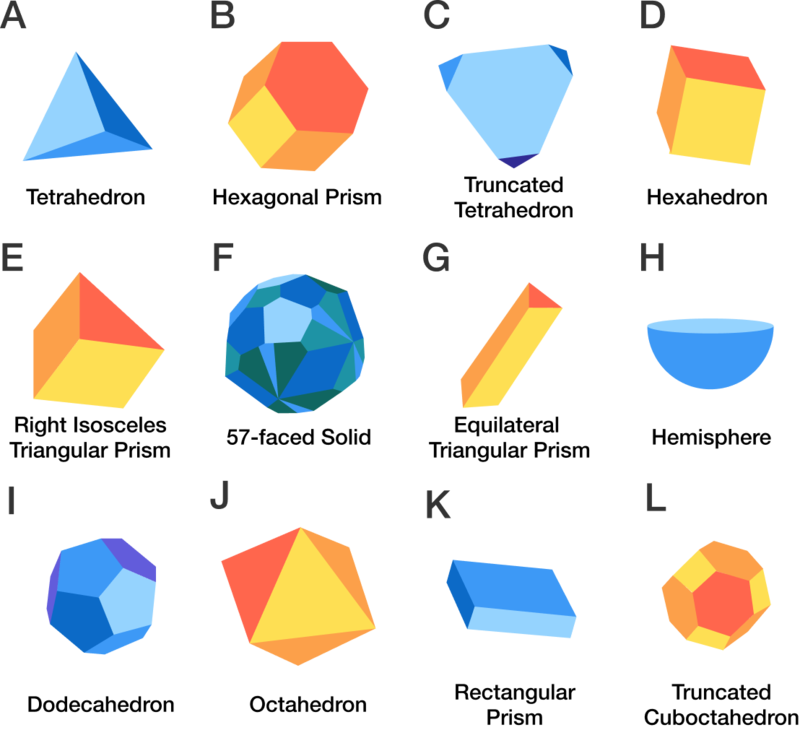Tesseract Cross Sections
If you took a solid, 4-dimensional hypercube and cut it through with a single, flat, 3D hyperplane, which could not be the resulting cross-section?

Select one or more
This section requires Javascript.
You are seeing this because something didn't load right. We suggest you, (a) try
refreshing the page, (b) enabling javascript if it is disabled on your browser and,
finally, (c)
loading the
non-javascript version of this page
. We're sorry about the hassle.
The following solution was written by Tom Verhoeff :
Note that a (3D) cube has 2 3 = 8 vertices, where in each vertex, 3 edges meet (hence the 3D), and ( 2 3 ) = 3 faces (being squares) meet. The number of faces equals the number of vertices times the number of faces per vertex divided by the number of vertices per face, which equals 8 × 3 / 4 = 6 . These faces appear in 3 opposite pairs.
Similarly, a 4D hypercube has 2 4 = 1 6 vertices, where in each vertex, 4 edges meet, and ( 3 4 ) = 4 hyperfaces (being cubes) meet. The total number of hyperfaces of the hypercube equals the number of vertices times the number of hyperfaces per vertex divided by the number of vertices per hyperface, which equals 1 6 × 4 / 8 = 8 , since each hyperface (being a cube) is incident on 8 vertices. These hyperfaces appear in 4 opposite pairs.
When a cube is intersected by a plane, you get a polygon with at most 6 edges, because a cube has 6 faces, and each face cut by a plane contributes at most 1 line segment, and possibly none. Line segments contributed by opposite faces are parallel.
When a hypercube is intersected by a (3D) hyperplane, you get a polyhedron with at most 8 polygonal faces, because a hypercube has 8 hyperfaces, and each hyperface (cube) cut by a plane contributes at most 1 polygonal face, and possibly none. Faces contributed by opposite hyperfaces are parallel.
This eliminates F (more than 8 faces), H (has a non-polygonal spherical "face"), I (more than 8 faces), and L (more than 8 faces).
The shapes of these faces can be squares, rectangles (thin and wide), triangles (big and small), and hexagons (regular, but also with alternating long and short edges). (Also pentagons, but not regular). Each of the remaining combinations is achievable. In particular, C is possible, featuring four pairs of a small triangle and opposing hexagon with alternating long and short edges.